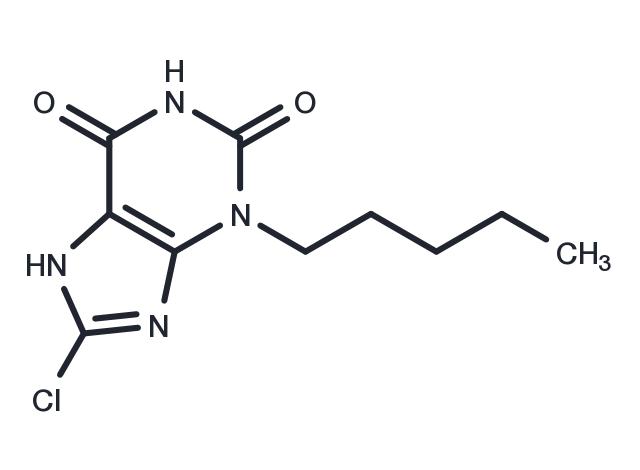Powder: -20°C for 3 years | In solvent: -80°C for 1 year


GSK256073 is an orally active GPR109A agonist. GSK256073 also is a long-lasting and non-flushing HCA2 (hydroxy-carboxylic acid receptor 2) full agonist (pEC50: 7.5). GSK256073 acutely improves glucose homeostasis via inhibition of lipolysis.

| Pack Size | Availability | Price/USD | Quantity |
|---|---|---|---|
| 1 mg | In stock | $ 67.00 | |
| 2 mg | In stock | $ 98.00 | |
| 5 mg | In stock | $ 163.00 | |
| 10 mg | In stock | $ 263.00 | |
| 25 mg | In stock | $ 463.00 | |
| 50 mg | In stock | $ 682.00 | |
| 100 mg | In stock | $ 969.00 | |
| 1 mL * 10 mM (in DMSO) | In stock | $ 178.00 |


| Description | GSK256073 is an orally active GPR109A agonist. GSK256073 also is a long-lasting and non-flushing HCA2 (hydroxy-carboxylic acid receptor 2) full agonist (pEC50: 7.5). GSK256073 acutely improves glucose homeostasis via inhibition of lipolysis. |
| Targets&IC50 | HCA2 (hydroxy-carboxylic acid receptor 2):pEC50: 7.5 |
| In vitro | GSK256073 (100 μM) suppresses cAMP elevation induced by isoprenaline (100 nM) in rat primary adipocytes. GSK256073 is approximately 10-fold more potent than niacin against human HCA2 (pEC50 value of 7.5 compared to 6.7 for niacin). In membranes prepared from Chinese hamster ovary cells expressing recombinant human HCA2, It has good activity versus the rat orthologue of HCA2 (pEC50 value of 6.9 compared to 6.4 for niacin) [2]. |
| In vivo | GSK256073 (i.v.; 1-10 mg/kg) produces a dose-related decrease in NEFA, however, the enhanced in-ear temperature induced by 10 mg/kg i.v. GSK256073 is only 40% of that induced by 10 mg/kg i.v. niacin. GSK256073 (p.o.; 1, 30, and 100 mg/kg; in rat) displays that the fall in NEFA is of rapid onset and that the maximum is dose-related with inhibitions of 74, 81 and 88%, respectively. Although the duration was longer with a reduction of 91% still present 6 h post-dose at 10 mg/kg, triglycerides reduce is followed as a similar pattern [2]. |
| Molecular Weight | 256.69 |
| Formula | C10H13ClN4O2 |
| CAS No. | 862892-90-8 |
Powder: -20°C for 3 years | In solvent: -80°C for 1 year
DMSO: 16.67 mg/mL (64.94 mM), Sonication is recommended.
You can also refer to dose conversion for different animals. More
bottom
Please see Inhibitor Handling Instructions for more frequently ask questions. Topics include: how to prepare stock solutions, how to store products, and cautions on cell-based assays & animal experiments, etc.
GSK256073 862892-90-8 Endocrinology/Hormones GPCR/G Protein Others GPR type 2 Inhibitor mellitus GSK-256073 HM74A HCA2 homeostasis GPCR T2DM dyslipidaemia GSK 256073 glucose HCAR2 diabete inhibit GPR109A PUMA-G inhibitor
